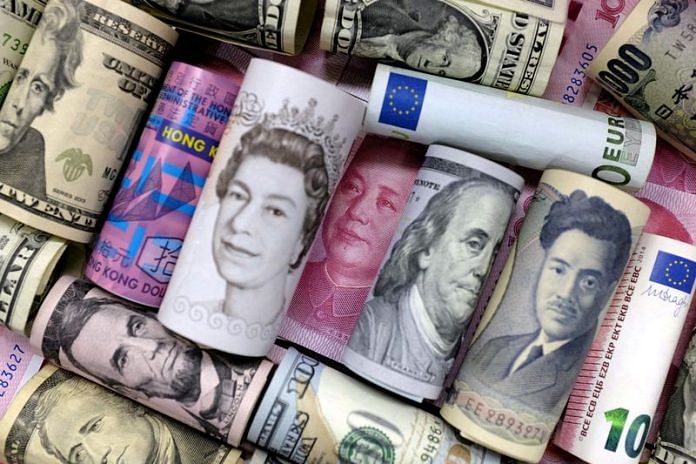By Alun John and Anna Pruchnicka
LONDON (Reuters) -The dollar traded at its highest since November against a basket of major currencies on Thursday, after hotter-than-expected U.S. inflation data a day earlier squashed expectations of an interest rate cut in June, leaving the yen at a 34-year low.
Investor focus will now be on U.S. producer price data and the European Central Bank’s policy meeting later in the day, for indications about whether the Federal Reserve and ECB policies will start to diverge later this year.
The euro was down 0.13% at $1.07267, following Wednesday’s 1% fall on the U.S. data. The pound traded flat at $1.2534 after a 1.1% fall a day earlier.
Any change in ECB rates would come as a major surprise to markets, but the focus is on what president Christine Lagarde says about the pace of cuts. Policymakers offered multiple hints in recent weeks, some quite explicit, that the central bank will start cuts at its June meeting.
The ECB announces its rate decision at 1415 CET (1215 GMT)
The outlook for the ECB and for other central banks has been complicated by U.S. inflation data, which caused markets to push back significantly their expectations of Fed rate cuts, said Simon Harvey, head of FX analysis at Monex Europe.
“The ECB will likely try to be as non-committal as possible about their path after June at today’s meeting,” he said, adding that the economic situation in Europe meant the central bank would have to cut more than its U.S. counterpart in the coming months, which would send the euro lower.
The yen was at 153.26 per dollar, flat on the day, but at its weakest since 1990 again after a bruising Wednesday which saw the dollar climb nearly 1% against the Japanese currency.
That left the dollar index a touch higher on Thursday at 105.26, its highest since November.
Markets are now pricing in a 17% chance of the Fed cutting rates in June, compared with 50% before the CPI data, according to CME FedWatch tool, with September turning out to be the next starting point for rate cuts.
Traders are also pricing in 43 basis points of Fed cuts this year, far less than the 75 basis points of easing projected by the U.S. central bank. At the start of the year, traders had priced in over 150 bps of cuts in 2024.
U.S. producer price inflation data later on Thursday could shape those expectations further, as it will give clues about what to expect from personal consumption inflation data, due later in the month, the Fed’s preferred gauge of inflation.
The Canadian dollar hit its weakest since November at C$ 1.3702 per U.S. dollar on Wednesday, after the U.S. CPI data and after the Bank of Canada left rates steady but said a June cut was possible.
YEN WATCH
The yen’s slide has brought intervention fears back as authorities in Tokyo reiterated they would not rule out any steps to deal with excessive swings.
Japan intervened in the currency market three times in 2022 as the yen slid toward what was then a 32-year low of 152 to the dollar.
“These warnings from Tokyo will quickly start to sound hollow and hence for credibility purposes alone, we maintain that intervention looks imminent,” said MUFG analysts in a note.
“It may require one further sharp jump toward 155.00 (for dollar/yen) to justify it more clearly given the fact that the moves to date certainly are more modest than in 2022 when intervention took place.”
The yen is down nearly 8% against the dollar this year, with the currency rooted near 151-per-dollar levels since the Bank of Japan last month ended eight years of negative interest rates.
Low Japanese rates have made the yen the funding currency of choice for carry trades for years, in which traders typically borrow a low-yielding currency to then sell and invest the proceeds in assets denominated in a higher-yielding one.
Bank of Japan Governor Kazuo Ueda said on Wednesday the central bank would not directly respond to currency moves in setting monetary policy, brushing aside market speculation that the yen’s sharp falls could force it to raise interest rates.
(Reporting by Alun John and Anna Pruchnicka in London and Ankur Banerjee in Singapore; Editing by Sam Holmes, Jacqueline Wong, Devika Syamnath and Tomasz Janowski)
Disclaimer: This report is auto generated from the Reuters news service. ThePrint holds no responsibilty for its content.



